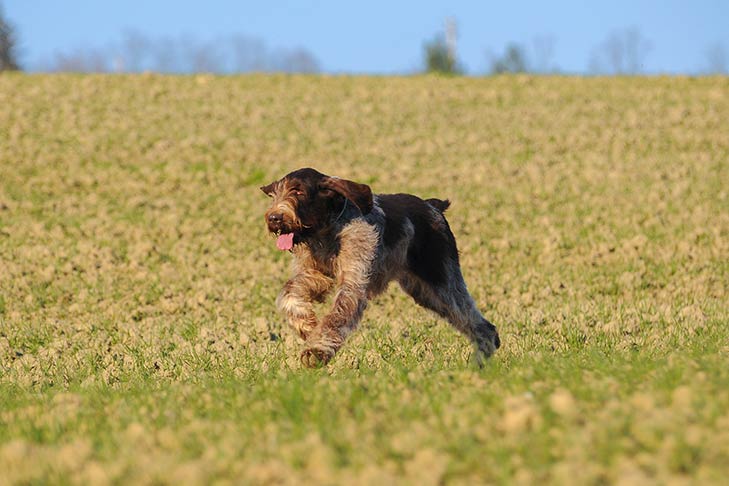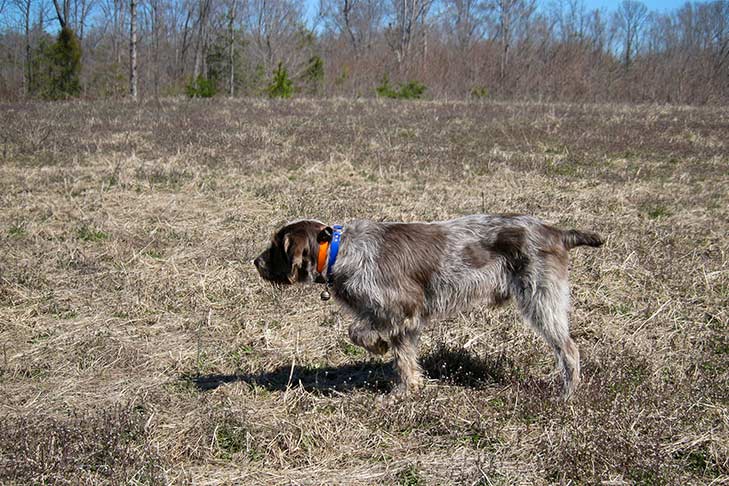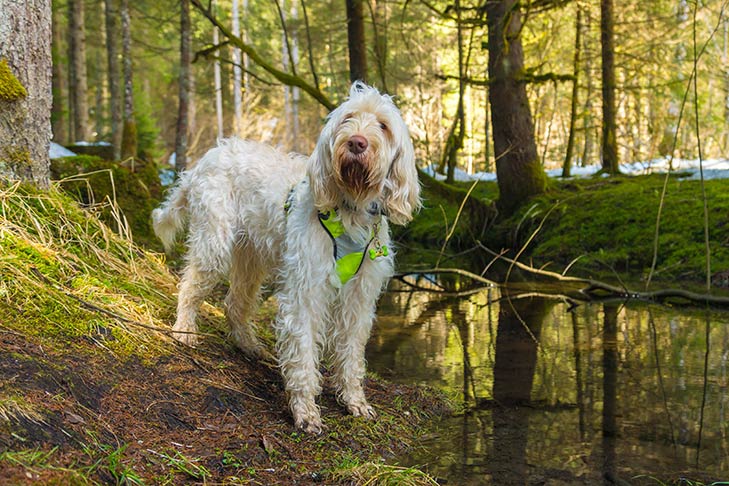The densely covered hunting dog, Spinone Italiano, is gregarious, docile, and patient, sometimes stubborn but always lovable. The Spinone, descended from ancient Italian stock, is one of Continental Europe’s most versatile field dogs. The Spinone Italiano (plural: Spinoni Italiani) is an all-around hunter with a square and strong build. Spinoni is strong and muscular, built for endurance more than speed. The dense coat has a natural, unclipped appearance and is available in a variety of colors and patterns. The expression embodies the breed’s considerable Old World charm. Those beautiful, charmingly expressive eyes, capped off by shaggy brows and a tufted beard, have won many hearts in Italy and they’re winning new ones every day here in America.






 Health
Health Grooming
Grooming Exercise
Exercise Training
Training Nutrition
Nutrition